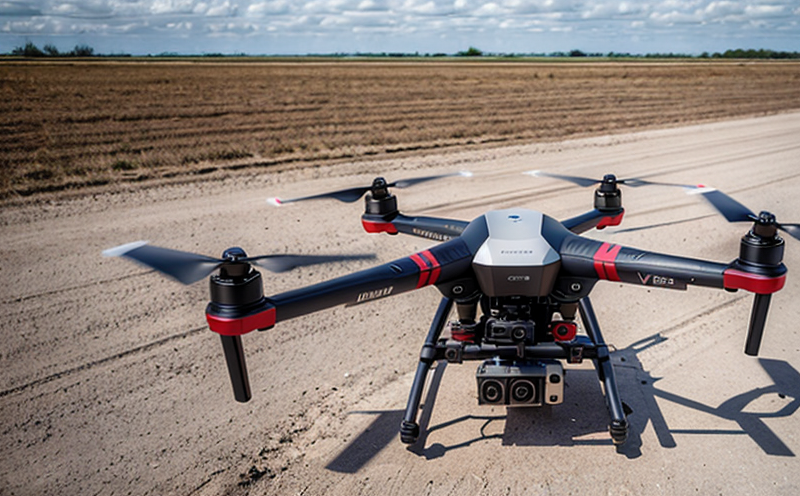ISO 23629-20 UAS Command and Control System Testing
The ISO 23629-20 standard is specifically designed for the testing of command and control (C2) systems used in unmanned aircraft systems (UAS), commonly known as drones. This service ensures that these critical components meet stringent international standards, guaranteeing safety, reliability, and interoperability.
Our laboratory uses cutting-edge equipment and methodologies to evaluate various aspects of the C2 system, including signal integrity, command accuracy, data transmission protocols, and security features. Compliance with ISO 23629-20 is essential for manufacturers aiming to ensure their products are robust enough to operate in complex environments while being compatible with other UAS systems.
The testing process begins with a comprehensive review of the C2 system’s design documentation, which helps identify potential issues before physical tests begin. Next comes the setup phase where we replicate real-world conditions as closely as possible, including altitude variations, temperature changes, and electromagnetic interference (EMI). This ensures that any findings are relevant to actual field performance.
For signal integrity testing, our facilities employ advanced spectrum analyzers capable of measuring frequency bands used by UAS C2 systems. We also conduct thorough checks on command accuracy using precise timing equipment to ensure commands are executed within specified tolerances. Data transmission protocols are verified through comprehensive network simulations that mimic various communication scenarios.
Security features play a crucial role in protecting sensitive information exchanged between the ground control station and the UAS itself. Our experts perform penetration testing to identify vulnerabilities that could be exploited by malicious actors. Additionally, we assess encryption algorithms used for secure data transfer, ensuring they meet current industry standards.
The results of these tests are meticulously documented and reported according to ISO 23629-20 requirements. Compliance certificates can be issued upon successful completion of all specified criteria. This not only provides peace of mind but also enhances brand reputation among customers who value quality assurance above all else.
| Test Parameter | Description |
|---|---|
| Signal Integrity | Evaluation of the stability and quality of communication signals. |
| Command Accuracy | Determination of how closely commands issued to UAS match expected outcomes. |
| Data Transmission Protocols | Verification that data is transmitted reliably and efficiently across networks. |
| Security Features | Assessment of measures taken to protect sensitive information from unauthorized access. |
Benefits
Complying with ISO 23629-20 offers numerous advantages for aerospace and aviation companies. It ensures that all UAS C2 systems function safely and reliably under demanding conditions, thereby reducing the risk of accidents or malfunctions during operations.
This certification helps manufacturers gain a competitive edge by demonstrating their commitment to excellence in product development. Moreover, it fosters trust among regulators and end-users who appreciate rigorous quality assurance practices. By adhering to this standard, companies can also anticipate smoother regulatory approval processes across different countries.
Customers benefit from increased confidence knowing that the products they purchase come from suppliers committed to high standards of manufacturing and testing. This leads to greater customer satisfaction and loyalty, contributing positively to business growth.
Environmental and Sustainability Contributions
The rigorous testing process mandated by ISO 23629-20 supports environmental sustainability goals within the aerospace industry. By ensuring that UAS C2 systems perform optimally, we help reduce fuel consumption and emissions associated with conventional aircraft.
Furthermore, this standard encourages innovation in energy-efficient technologies, which can contribute significantly to reducing carbon footprints. The use of advanced materials and manufacturing techniques recommended under the ISO framework also promotes resource efficiency throughout the supply chain.
Our laboratory actively participates in initiatives promoting green practices within laboratories, sharing best practices and knowledge with peers. Through our efforts, we aim to create a more sustainable future for all stakeholders involved in aviation and aerospace industries.





